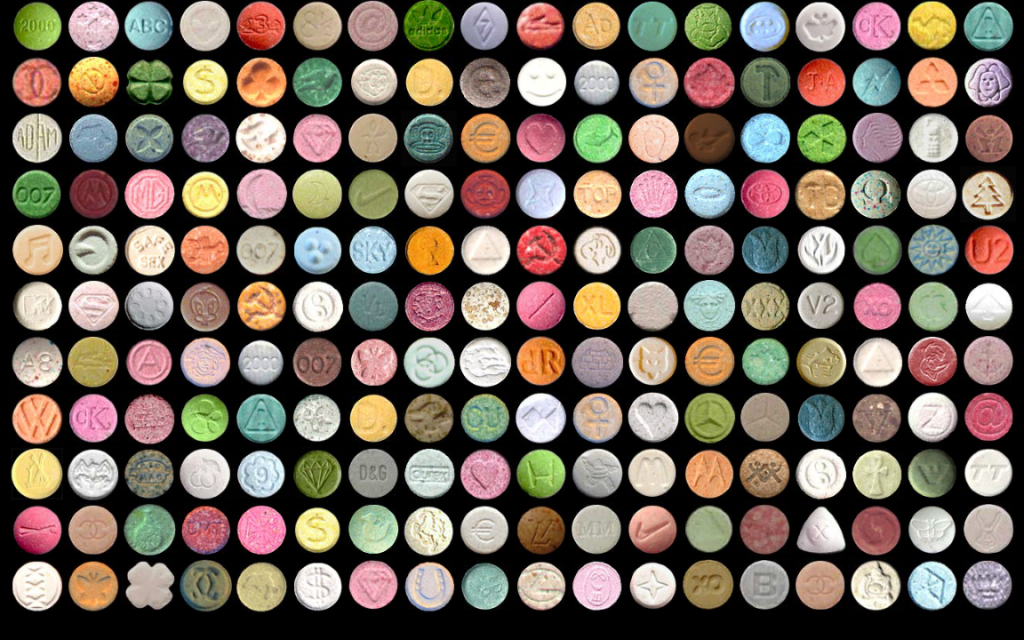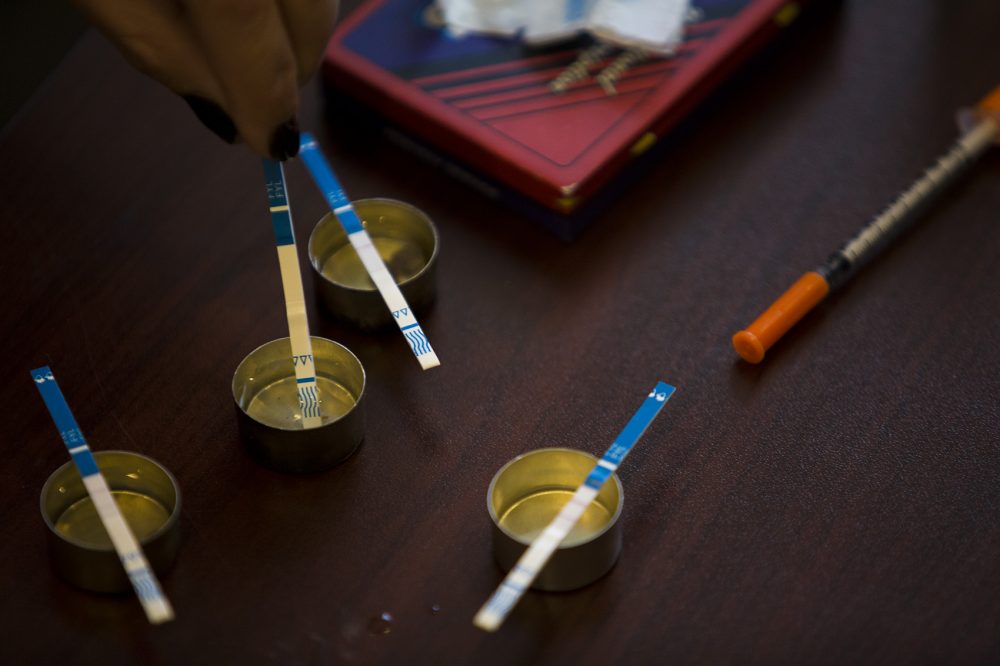Recreational drug use has always been part of the music scene for some and we spoke to Rachel Clark from DanceSafe about how to reduce associated risks.
When we recently covered how to deal with anxiety when returning to raves and festivals, one aspect that was touched on was drug use, but we also realized the topic needed to be covered in depth. A truly informed voice on this topic was needed to assure the accuracy of information and education. So we reached out to Rachel Clark, DanceSafe’s Programs & Communications Coordinator, to dig into this important topic.
Rachel Clark is quite a force in the harm reduction movement. She’s an Oberlin graduate who also developed and taught a drug education course which she has since offered for free. As someone who grew up in a drug positive culture, the topic has deep meaning to her. She’s taken her upbringing to another level, getting heavily involved in so many harm reduction efforts, especially ones focused on the music and festival scene.
What’s especially unique about Rachel is that she approached education from a scientific point of view, grounding everything in science and fact. Further, she does this with an entertaining style to make it approachable to anyone. It’s filled to the brim with useful information and is one that anyone in the scene should consider attending to grow their knowledge in the harm reduction space.
Looking to gain extra insight, we sat down with Rachel Clark to cover the overarching perspectives of recreational drug use that can lead to a safer, or more dangerous experience, along with the specific ways to mitigate risk. It was such a pleasure to talk to her 1-on-1 and really dig into such an important topic – and we hope the conversation does justice to her casual, yet incredibly important, approach to harm reduction.
Hi, Rachel! It’s so nice to chat with you today, and especially on such an important topic. Before we get started, please tell us a bit about your background so readers have an understanding of why you have a unique and important view of recreational drugs.
I have been involved in drug-using communities since I was 12 and this has always been a passion project for me. I discovered Erowid very early in middle school and went from there: acting as a community harm reductionist and getting involved in volunteering with harm reduction efforts on an unofficial basis when I was around 17. Then I moved into DanceSafe, first as an unpaid intern, then paid intern, then contractor, and finally now as a staff member. I have established a Students for Sensible Drug Policy chapter at Oberlin College and worked for Insomniac doing Ground Control. Generally, my involvement comes from a profound, lifelong passion and dedication to research, and being actually present physically with people who are doing drugs.
That is super impressive and your research work led you to create the DrugsCo class, right? That class is so chock full of useful information that I am taking it a second time! Why is it important to disseminate deeper and scientific knowledge into the recreational drug-using community?
A lot of the stigma comes from cognitive dissonance. This idea that something is one way and when presented with alternate information, well, people tend to get overwhelmed with the idea that what they knew was wrong. Ultimately it’s an issue of informed consent. If you give people truthful, factual, unbiased information, that gives them the ability to be autonomous in their decision-making about their own bodies and to gain a broader understanding of what it means for someone to be autonomous.
A lot of drug education is based on emotion and a lot of drug policy is also based on emotion, racism, and classism. If we’d predicated drug laws upon science, we wouldn’t have drug laws. Understanding how drugs work on a physiological and psychological level, I think this is paramount for giving people the ability to be, like, “Oh, this thing that I thought, why do I think that?” Giving people the opportunity to really reflect on and interface with their thoughts about drugs and decide whether or not what they previously internalized was based on fact, or based on emotion.

While regular users may have the desire to learn more, many casual users just sort of roll the dice and hope for the best. Why is general education so important?
I think that social influence is an under-recognized power structure, it is very powerful to socially approve or disapprove of certain behaviors. And it is also very powerful to be entrenched in people who think and act in certain ways. And this can either be a very positive thing or a very, very negative thing. We need to have people popularize safer drug use as something that’s cool to give a fuck and to actually really care about. To care about the state of your body, the state of your mind, the way that you’re interacting with yourself and others in your environment. Also to find it cool and interesting to be responsible about drug use.
That kind of thing can happen on a peer basis fairly easily if people use positive reinforcement and directly go out of their way to say, “I think it’s really cool that you do this thing around your drug use. That’s dope, I’m impressed.” This reinforces that it is very socially acceptable and desirable to be a responsible drug user. As opposed to the stereotype of a sexy, reckless drug user because it’s much more glamorous to snort cocaine with a $100 bill than it is to pull out a Post-It note and tear off a piece of it and roll it up. So a lot of that comes from the social climate that we’ve developed around what is and is not considered to be impressive, pertaining to drug use. Really adjusting culturally, the ways that we enforce social paradigms and expressing what we think is positive in other people.
It’s funny because I never made the connection but a lot of my rave crew know me as the guy who always has a fan and is always passing around water with electrolyte tablets for those that are doing MDMA and are just overheating.
Great move! You are shifting the social paradigm!
Thanks. I didn’t even think of it that way until now! Post-pandemic there seems to be a spike in fentanyl-laced street drugs and the prevalent theory is that the drug trade took a hit during the pandemic and these channels are looking to boost margins in order to make up for that. Any thoughts on this trend? Does the “why” even matter here?
There are a lot of theories about this and I’m not sure which one is right. My general belief is that a majority of fentanyl contamination is simply contamination. But we have indeed seen a spike in fentanyl present in cocaine in ketamine as well recently. I received news that multiple large shipments of ketamine had tested positive recently on the West Coast for fentanyl. That’s very concerning because every time fentanyl becomes more prevalent in a new powder drug or press pill drug, it takes an entire new push of education to get users to really test everything. It’s hard enough to get people to test their dope because it’s just so inaccessible to most people. There is some science involved in it, you have to do it correctly to get the results that you want.
In a private chat group frequented by experienced recreational users, I’ve seen a few interesting stories circulated recently and I want to highlight two of them. First is a recent health alert from Oregon that noted that counterfeit pills are so well made that even experienced users cannot tell the difference. But let’s be real, can anyone tell the difference between a “safe” pill or a potentially dangerous one on appearance alone?
That’s an excellent question. No drug can be identified via sensory information with any kind of certainty. There is no such thing as affirmative drug testing using your body. You can tell when something is clearly off, but that is the extent of it. If you have a pressed pill, and you got it on the illicit market, and the press is all wonky, and it’s super crumbly, or if you have something that smells super wrong, then you could be like, “Oh, warning!” But you are never going to be in a situation where you can say, “Oh, this is good,” because of this thing that I’m witnessing. There is no certainty unless you’re sending it into a lab.
Even a lab like DrugsData.org in the United States does not have permission to reveal the inactive ingredients from what you send in, or the dosages and quantities of what you send in, which is really frustrating. It’s not their fault, it’s how American regulation works. But even if you send something in for full GC-MS lab testing, they can only tell you the basics like one part MDMA and one part MDA. They won’t tell you if there are binders, they won’t tell you if it’s 200 milligrams, whatever. But if you go on DrugsData.org and look at Switzerland’s data, they can tell you it’s 187 milligrams of MDMA. So that’s just another thing that the US does to complicate matters.
The second share from that chat group has been stories of local overdoses due to fentanyl-laced cocaine and ketamine. Several participants were advocating for carrying Narcan (naloxone) to events. Despite this being a very educated and intellectual group, I was surprised to see how many others either didn’t know what Narcan was or thought it, too, was dangerous. Is this a common gap in understanding?
As I understand it, unless you have a pre-existing heart condition you’re not going to be harmed by getting Narcan. If someone is not breathing and you don’t know what they’ve taken, or they’ve snorted something or swallowed something, and they’re exhibiting symptoms of an opioid overdose, you should Narcan them. That is a way better bet than not Narcan’ing them.
I would say that education is essential for every part of society, but we need to choose where we prioritize based on the highest need. So we should be looking at the numbers and seeing who is most heavily impacted by criminalization, who has the lowest access to drug checking supplies, which is going to be low-income people, and probably people of color as well, and ensuring that those educational materials and those resources are delivered to those communities first. And people that already exist and circulate within the more privileged communities hold a community responsibility for taking it upon themselves to participate in disseminating that information in all of those areas.
So like, tell your friends, and if your friends have a big soapbox, and have the privilege of a lot of people that they can reach, encourage them to use it for this purpose. Like, if you have a microphone, you should use that microphone to benefit people who do not have a microphone, basically.

Fentanyl gets lots of attention for its potency and prevalence, but it is far from the only dangerous adulterant, right? What other dangers should users be aware of?
There are a lot of pieces to that and I think that there are quite a number of things to consider when you think about how risky a drug is. For example, it’s not as simple as how physically toxic a drug is.
The way that I like to visually imagine this is that you have a glass tube on a table and you have a ton of different colors of marbles. So let’s say that we’re looking at fentanyl, if we’re just looking at the red marbles, the red marbles representing how toxic that substance is. Fentanyl is fairly nontoxic so you put just a little sprinkling of red marbles in there. But when you look at its LD50, which is the dose that’s lethal to 50% of test subjects who take it, it’s a really low dose. So the risk of overdose, not necessarily toxicity, is super high from illicit consumption. So you need to put a bunch of, say, orange marbles in for LD50.
Beyond that, you might say the toxicity is low, but the overdose risk is high. So in order to know how practically risky this overdose risk is, we need to look at whether we have drug checking materials, and those are yellow marbles. If you don’t have any drug checking materials, then you put a ton of yellow marbles in there and suddenly your tube is really heavy and likely to fall over. If it falls over, it’s gonna be a big deal. But if you do have drug checking materials, then you put like a little sprinkling of those yellow marbles in there and your tube is a lot less heavy, it’s a lot lower risk of tipping over.
So that’s an example of how it’s not quite as simple as just immediately looking at the drug itself. It’s really about the context in which you use that drug. So looking at something like mushrooms, for instance, you would have barely any red marbles in there if at all because mushrooms are so nontoxic. The other marbles relating to dose and drug checking will be pretty low, too. But then you need to consider your personal history. “Do I have a family or personal history of mood or psychotic disorders?” If the answer is yes, then you put a bunch of green marbles in there. Those green marbles might tip the scale for you compared to someone else who’s doing a different drug that has a higher toxicity profile, because your risk of psychological distress, which could be life-altering, is really high.
As we wrap up this discussion, what’s the one thing you’d want our audience to take away from what we’ve covered? I think you probably just summarized it right there in the end, is it context and information?
It is context. All drug use is inherently based on context and informed consent and those are two things that people are missing. You cannot consent to the risks of a drug experience without knowing what you need to look for as being risk factors. Period. You just can’t do it.
So do your research. Use PsychonautWiki.org. Read the Erowid Experience Vaults, carry Narcan, test your drugs. Please encourage other people to be sexy and safe about their drug use, those things can happen simultaneously. I opened someone’s fridge the other day and I saw a bar of chocolate on top of a bunch of fentanyl strips. I said to myself, “that’s hot!” That can become status quo, we just have to make it that way. This is stuff that could really impact your life and the lives of others and encourage, like a social climate of really being good to yourself, because you’re better when you’re good to yourself. And remember, it’s hard to be sexy when you’re dead.








